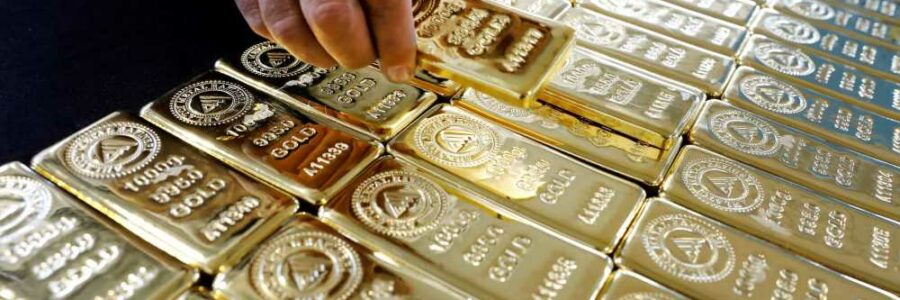
Trader sets key level to watch in gold after metal's third straight weekly gain
Gold is having a solid month.
The precious metal fell slightly on Monday after notching its third straight weekly gain as investors flocked back to the safe-haven asset amid concerns around the global economic recovery.
Gold prices are up nearly 2% in the last three weeks, hovering around $1,800 on Monday.
Gold is entering a seasonally strong period, Newton Advisors President and founder Mark Newton told CNBC's "Trading Nation" on Friday.
Typically, the metal bottoms in June or July, then moves sharply higher by early fall, Newton said.
Though higher interest rates and a stronger dollar could cap gold's gains, a move above $1,855 would fuel another leg higher, he said.
Conversely, "under 1750, we could actually have a pullback into late July near March lows. That should be an excellent time to buy gold," he said.
The Commodity Futures Trading Commission's Commitments of Traders report for gold also hasn't reached extremes quite yet, indicating that investors could still get a chance to buy in, Newton said.
"If we had a final flush in gold, that would certainly get us to the area where I think we could really be confident in longs," he said. "So we're getting there, but I think seasonality should serve as a tailwind for us in the months ahead."
Newton suggested playing the move with gold-based exchange-traded funds such as the SPDR Gold Trust (GLD), the iShares Gold Trust (IAU) or the VanEck Vectors Gold Miners ETF (GDX).
Another market analyst wasn't as optimistic about gold's prospects.
The narrative that growth and inflation will return to pre-pandemic levels feels early to call, said Steve Chiavarone, a portfolio manager, equity strategist and vice president at Federated Hermes.
"We just simply don't agree," Chiavarone said in the same "Trading Nation" interview. "We think they're going to settle into a higher range, a range of more than 2% growth, more than 2% inflation [and] therefore more than 2% yields."
That tends to cultivate interest in more value-oriented investments at the expense of safe-haven assets such as gold, Chiavarone said.
"Seasonality issues notwithstanding, that's really the driver to get people away from safe-haven trades like Treasurys and gold back into much more cyclical and inflation hedge plays, more like cyclical value and other kind of industrial commodities," he said. "We're fading this."
Disclaimer
Source: Read Full Article